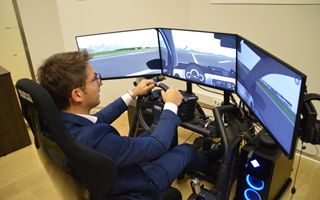(Finance) – TheMilan Bergamo Airport he was the first in Italy to equip himself with a simulator for the guidance of road service vehicles in the operational areas, the second at European level after the international airport of Brussels. A record that reflects the attention paid by the management company to aspects of airport safety and has made it possible to promote, in the auditorium of the SACBO management offices, a workshop dedicated to the theme of “ADVANCED TECHNOLOGIES AND NEW REGULATIONS TO IMPROVE SAFETY IN THE AIRPORT OPERATIONAL AREAS”, in collaboration between Milan Bergamo Airport, TXT Group (driving simulation software development companies) and theIFSC (Italian Flight Safety Committee, the Italian association of flight safety experts), with the participation of representatives of the national aeronautical authority (ENAC) and the European one (EASA), competent for the regulation of airport ground assistance services.
The workshops was focused on improving the safety of operations in the aircraft movement and operational areas; a process linked to new regulatory developments on ground assistance services, sharing the functions and benefits of the use of the driving simulator (Airside Driving Simulator) of rubber vehicles by the airport manager, which represents a contribution and technological advancement and procedural to increase airport safety.
The works, opened by the interventions of Amelia Corti – General Director SACBO e Roberta Carli Territorial Director Bergamo ENAC – National Civil Aviation Authority, and coordinated by Lorenzo Mezzadri President of the IFSC, hosted, on the subject of new regulations, the contributions of Adina Szonyi of EASA e Giuseppe Ignoti of the National Civil Aviation Authority.
“We have an excellent opportunity with our simulator to grow a lot in terms of training and prevention of safety events – he highlighted Amelia ShortsGeneral Director SACBO –. It is an opportunity to greatly enrich our experience and expertise in preparing people: to continuously maintain their skill levels, their operational skills and the quality of their work.”
“The technological evolution and progress of civil aviation has required and requires a continuous adaptation of regulations – he underlined Joseph UnknownENAC –. Regulations try to chase technological progress but very often this is not possible. Therefore today’s regulations leave a certain flexibility to operators”. The supervisory authority is the first to have to follow this progress with the increase in the knowledge and skills of the staff but the counterpart is also pushed to adapt and follow this progress technological by taking a proactive part in building safety”, he added.
Adina Szonyi EASA instead recalled that the European Union will publish a new regulation on Ground Ending in the coming months. “This means that we want to have a minimum level of security throughout Europe and in all airports from Europe,” he explained.
